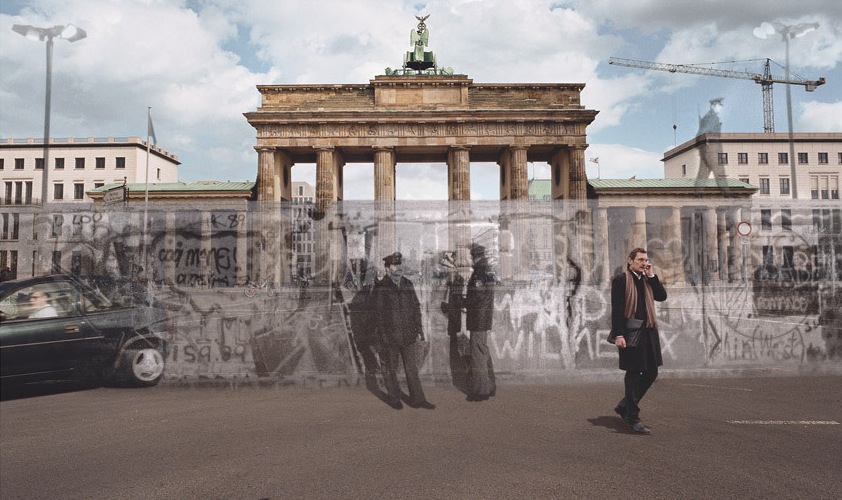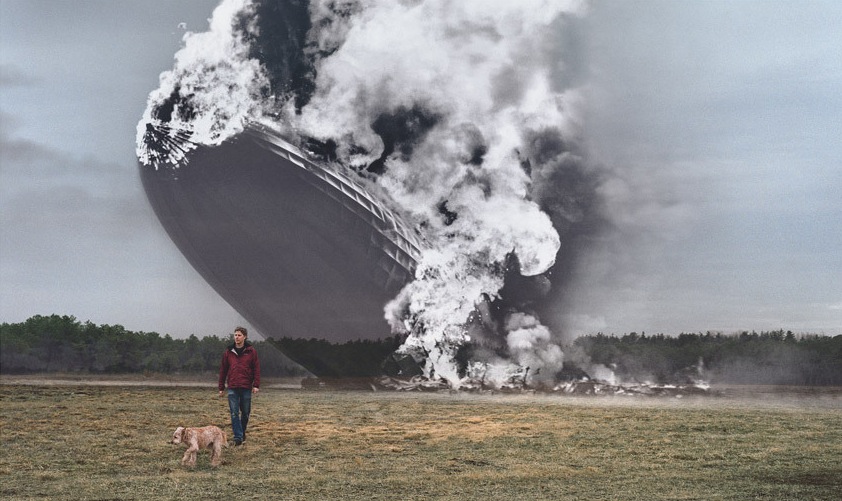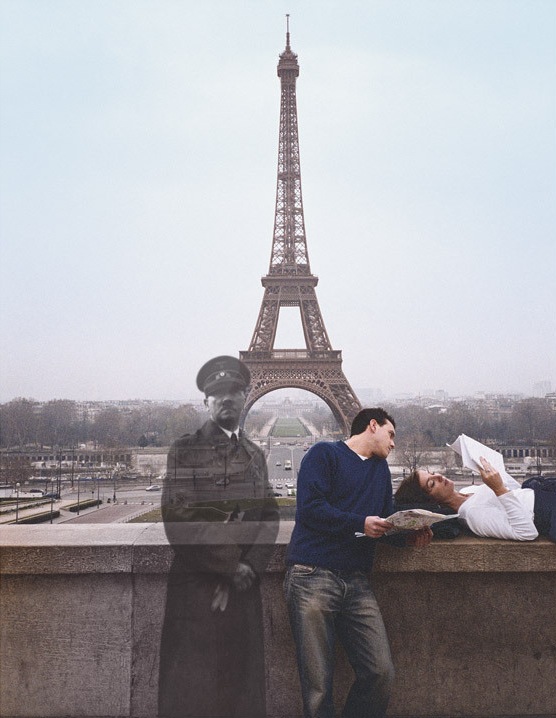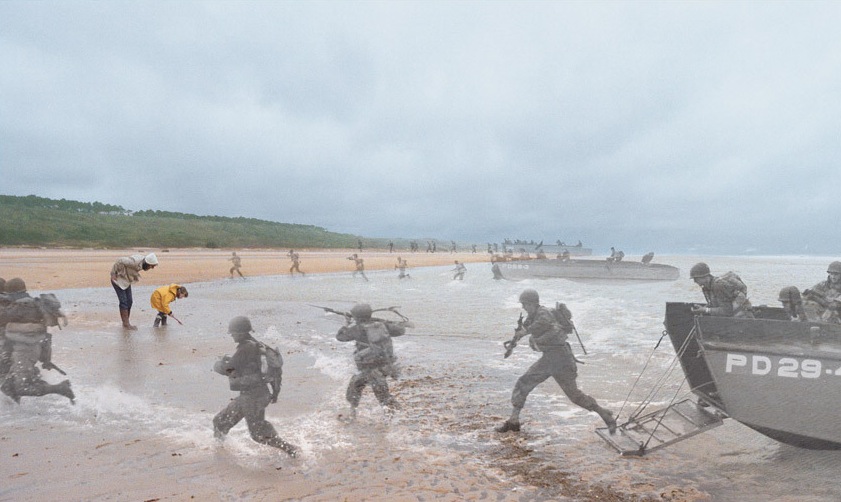Photographs from recent years are given a splash of past – a figure or middle-ground cast in a hauntingly transparent black and white, an image that comes from a photograph of what stood in the exact same spot decades before. Usually this image from the past comes from a time of war, so that the dramatic differences between countries fighting and not fighting can be witnessed in their entirety.
Below sits a photograph of Berlin’s Strasse des siebzehnten Juni taken in 2004. A man casually talks on his phone in the foreground and a car speeds past on the left, but in the center of the image stand two men from 1989, and behind them running through the middle of the scene sits the Berlin Wall, turned gray and translucent by time. A man walks along the wall in the older photograph, his form framed by a crane building in the future.
A peaceful scene in New Jersey is interrupted by the giant flaming Hindenburg blimp as it crashes to the ground, its second half already turned to collapsed rubble on the ground. This historical event that happened in 1937 is brought forward in time and crashes over the ground in 2004, as a man in a red coat walks his red dog in the foreground, completely unaware of the past happening behind him.
The series was created in collaboration with the advertising agency, Ground Zero, as part of a marketing campaign for the History Channel. The campaign also included tv ads in which black and white videos of the Berlin Wall falling are superimposed upon modern, ordinary scenes of people commuting.
The History Channel said the aim of the campaign is to “Motivate people to understand the history of where they live by watching the History Channel.” It’s easy to forget the people who came before us, and probably sat where we sit now and walked where we walk.
Seth Taras is a self-taught American artist, born into a family of artists. He’s been named one of Luerzer’s Archive’s 200 Best Photographers Worldwide. “Know Where You Stand” won Taras a Cannes Lion, and the campaign has now been translated into 30 languages and published in 130 countries.
His website gives more information into how his photographs come to be, reading, “Nearly all pictures are direct prints from original film negatives with no digital alteration and taken largely hand-held.”
For more of Seth Taras’ work, check out his website.
loading...








